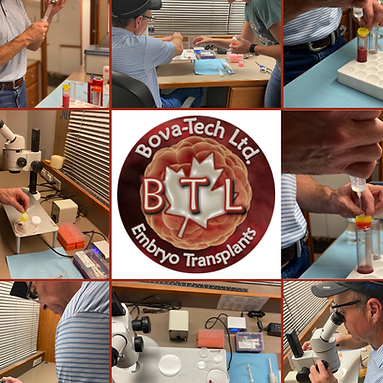top of page
Cattle Embryo Transplants, In-Vivo, IVF and International Embryo Sales
BOVA-TECH SERVICES
Bova-Tech offers in-clinic or on-farm bovine embryo collection, freezing and transplants, production of embryos for sale and/or export purposes, in-vivo (flushing), IVF (in-vitro fertilization, international sales and shipping, donor care, recipient programs, ultrasonography, semen/breeding soundness evaluation collection & freezing, cryopreservation and embryo storage.
.png)
.png)
ADD A TESTIMONIAL
We'd love to hear from you, so if you've had a great experience with Bova-Tech please add your testimonial!
bottom of page


.png)


.png)
.png)